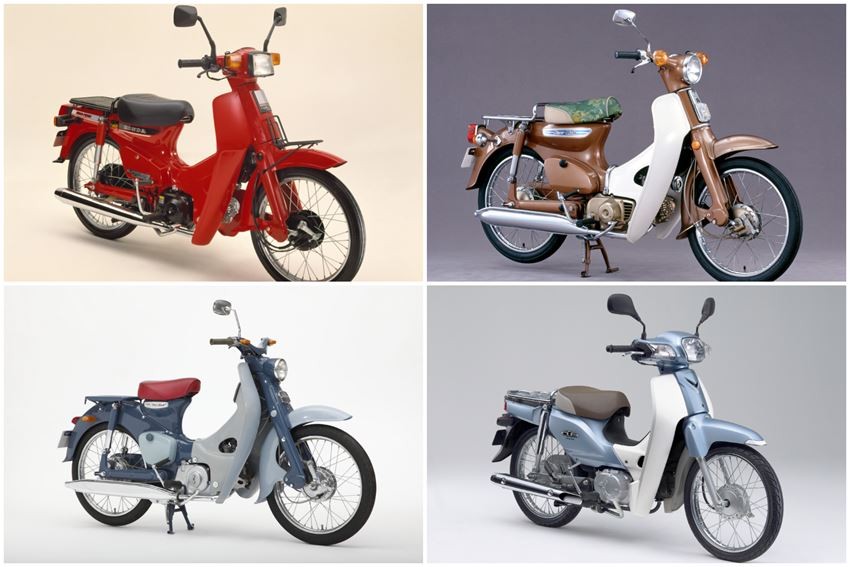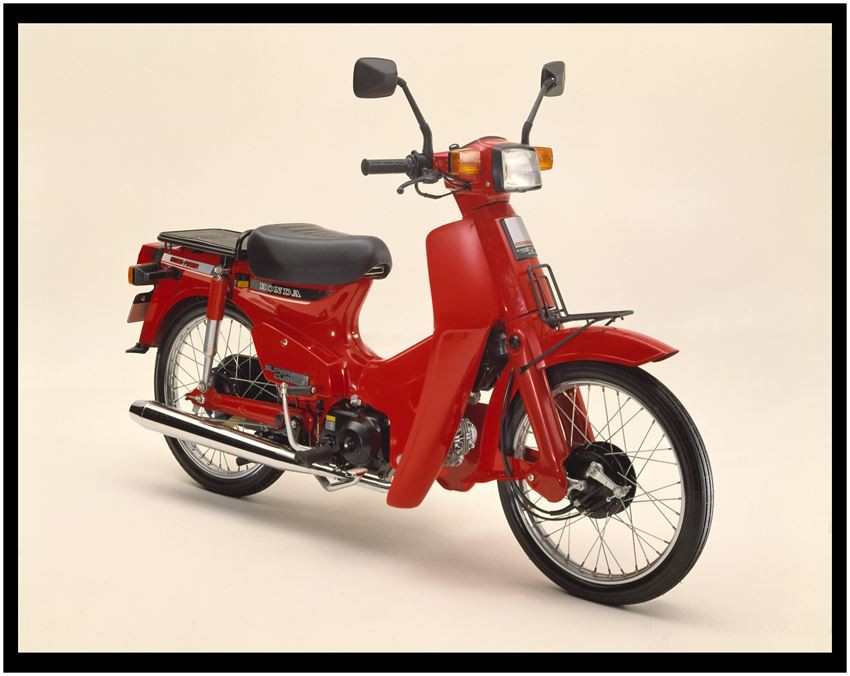The "Super Cub" is a motorcycle model which produced by HONDA. It has been sold in over 160 countries and regions and became a news item when worldwide cumulative production exceeded 100 million units in 2017. The Super Cub is the most produced motor vehicle in history and has been popular with the public for over 60 years since its launch.

Birth of the HONDA "Super Cub"
This world-famous motorbike’s production began in August 1958. It was developed by a team led by Soichiro Honda, the founder and president of HONDA. Ever since, the model has evolved constantly to keep pace with the changing needs of the times. All models have proved popular because all of their performance and durability. .
Part 1/1958 "Super Cub C100"
The first model quickly became a hot seller when it was released
"Compact and easy to control" was the concept from the outset. Clean and fuel-efficient, it could also be powerful, offered with an engine displacement volume as high as 125cc. It was equipped with automatic centrifugal clutch, meaning even beginners could quickly master driving it. One of its charms was the handlebar design which was inspired by a set of wings. More than 1,000 units were sold on the release date and it became a hot seller.
Part 2/1966 "Super Cub C 50"
OHC Power performance
The "Super Cub C50" released in 1966 adopted the new over-head cam shaft (OHC) engine. Performance and fuel-efficiency were greatly improved, with stories circulating of bikes that still kept running even without oil. In addition, the indicators were fitted with a flasher lens, the same as used in the Honda S600 sports car, and the safety was improved with an enlarged tail lamp. With the release of this model, Super Cub brand was firmly established.
Part 3/ 1971 "Super Cub Deluxe C50"
Model upgraded with metallic paint an integrated fuel tank
As Japan's economy grew and people became more affluent, demand for improved features reflecting a more deluxe lifestyle grew. In 1971, the upgraded "Super Cub Deluxe C50" was introduced. The metallic body paint gave a gorgeous impression, and the gasoline tank which was previously separated, was fully integrated into the body with no loss of capacity. The shape of the handlebar was redesigned to resemble a flying seagull.

Part 4/1982 "Super Cub 50 SDX (Red Cub)"
High power and low fuel consumption. Rectangular design for headlamps and meter.
In the 1980s, with the second global oil crisis, energy saving . An engine that realized low fuel consumption of 150 km per 1 liter was developed by improving the shape of the combustion chamber, intake and exhaust system, and reduction of friction loss. In addition, the the design of the headlight and speedometer was changed to rectangular.

Part 5/ 2012 "Super Cub 110"
Super Cub unified global model with design change from curved to straight lines
In anticipation of globally standardized noise and exhaust emissions, in 2012 the "Super Cub 110" was restyled as the "Global Cub" with a same basic design for the whole world. Headlights and indicators became square, with the overall design emphasis changing from curved to angular and straight lines, and the speedometer was enlarged to make it easier to see while driving.
Honda's Super Cub still has not stopped evolving!
The models introduced above are just a small part of the Honda Cub's evolution. Model changes continue to be carried out to suit the times and the user's needs. I really can’t wait to see how Super Cub evolves in the future!
Comments